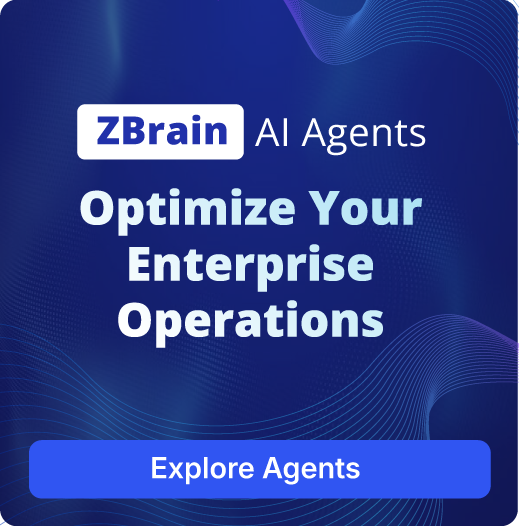ZBrain’s multi-agent collaboration framework: How autonomous agents team up to solve complex enterprise challenges

Listen to the article
Multi-agent collaboration in AI refers to systems where multiple intelligent agents work together, communicate, and share data to achieve a common goal. Unlike a single-agent system, where one AI agent attempts to handle all aspects of a task in isolation, a multi-agent system distributes the workload among several specialized agents. This approach introduces key components not present in single-agent setups: inter-agent communication, which allows agents to exchange information and coordinate; shared data and memory, so agents have a consistent view of task state; and task delegation mechanisms, enabling agents to hand off subtasks to one another.
In essence, a multi-agent architecture more closely resembles a team of specialists collaborating than a lone generalist. This fundamental difference means multi-agent systems can tackle problems of greater complexity by leveraging collective intelligence, whereas single agents often hit a ceiling in performance on complex, multi-faceted problems. The following sections explore why multi-agent systems are crucial for complex enterprise tasks and how ZBrain enables agent-to-agent communication and coordination to solve real-world business challenges.
- Why multi-agent systems are essential for complex tasks
- Inside ZBrain’s multi-agent collaboration architecture
- ZBrain’s agent directory: Accelerating discovery and integration
- Scalability, reliability, and performance in ZBrain’s multi-agent ecosystem
- Security, compliance, and governance in ZBrain’s multi-agent collaboration
- ZBrain’s multi-agent collaboration as a strategic advantage
Why multi-agent systems are essential for complex tasks
As enterprise use cases grow in complexity, single AI agents struggle to manage every facet reliably. A single agent tasked with doing everything – accessing databases, analyzing data, generating reports, handling user interactions, and more – will eventually encounter limitations. It may become confused by too many tools or functions it has to juggle, suffer from context overload, or make mistakes due to its overly broad responsibilities. In contrast, multi-agent systems divide and conquer such complexity. Each agent is specialized for a particular domain or function, whether it’s data retrieval, analysis, planning, or user communication. By delegating subtasks to dedicated experts, the overall system can handle far more complex workflows than a monolithic agent ever could.
Benefits of multi-agent over single-agent systems:
- Solving greater complexities: Multiple agents collaborating can solve complex problems faster and more effectively. The combined problem-solving capacity is higher, enabling faster solution compared to a lone agent. In fact, multi-agent setups achieve higher task success rates and accuracy on complex, multi-step tasks than single agents.
- Distributed expertise: Each agent can be tuned to a specific domain or task, so it operates with focus and consistency. For example, one agent might specialize in financial data analysis while another focuses on forecasting or user interactions. This enhanced specialization means agents apply deep expertise to their piece of the problem, improving quality and efficiency.
- Parallelism and speed: With multiple agents, some tasks can be done in parallel, reducing overall execution time. Agents communicate and work together concurrently when possible, rather than waiting in a single queue. This allows tasks to be broken down and executed in parallel, accelerating overall workflow efficiency.
- Scalability: As needs grow, new agents can be added to the system to cover additional functions or increased load. Instead of overloading one agent with ever-expanding duties, a multi-agent architecture lets you plug in another specialized agent. This modular scalability is a huge advantage – for example, you might start with 3 agents and later introduce a 4th to handle a new subtask without disrupting the others.
In summary, multi-agent AI brings distributed intelligence to bear on complex problems. It mimics a well-coordinated team: each member has a clear role, and they communicate constantly to integrate their efforts. This stands in contrast to a single-agent system that is akin to a lone worker trying to multitask everything. For complex enterprise workflows – such as coordinating a supply chain, performing an end-to-end financial analysis, or managing an IT project – a multi-agent approach is far more likely to succeed efficiently. It’s no surprise that industry leaders are embracing multi-agent collaboration.
ZBrain agents are built around this philosophy of distributed, collaborative AI. ZBrain empowers enterprises to deploy and coordinate multiple autonomous agents, enabling seamless collaboration on complex, multi-step tasks. Next, we’ll dive into how ZBrain’s architecture supports agent-to-agent communication, task orchestration, and coordination – the technical backbone that makes these benefits possible.
Inside ZBrain’s multi-agent collaboration architecture
ZBrain Builder is a low-code, enterprise-grade agentic AI orchestration platform that enables organizations to build intelligent agents, orchestrate them into complex multi-step workflows, and deploy them seamlessly into production environments. With the introduction of Agent Crew and MCP (Model Context Protocol), ZBrain pushes the boundaries of agentic collaboration, enabling highly modular, secure, and scalable multi-agent systems. Below is a breakdown of the core components and features that power ZBrain’s collaborative architecture.
Agent communication protocols and APIs
ZBrain Builder standardizes how agents communicate both internally (agent-to-agent) and externally (agent-to-system) to ensure interoperability and consistency.
Internal agent communication
- Internal APIs: Agents communicate using internal REST-like API calls, allowing them to invoke each other’s functions or tools as needed.
- Agent discovery & reusability: Pre-built agents (Flow-based agents) are stored in an agent library. Once deployed, these agents can be customized or invoked by other agents internally.
External system integration via MCP
- MCP (Model Context Protocol): It serves as a secure bridge to external enterprise systems via MCP server endpoints, including databases, APIs, CRMs, and more.
- Reusable configurations: Once defined, MCP settings (headers and URL) can be reused across Agent Crews.
- Security & governance: Credentials are centrally managed and never embedded in prompts or tools, improving auditability and reducing risk.
Orchestration engine and task scheduling
ZBrain’s orchestration is driven by a hierarchical Agent Crew model, where a supervisor agent governs task delegation across child agents. This design enables scalable, modular automation of enterprise processes.
Agent Crew architecture
- Supervisor agent: Acts as the central orchestrator, breaking down the main task, delegating sub-tasks, and evaluating outputs from child agents.
- Child agents: Specialize in specific functions such as parsing data, running queries, validating results, etc.—based on scoped prompts and tools.
Low-code visual orchestration
- Workflows are created in ZBrain’s low-code interface by selecting components, configuring their parameters, and arranging them to define agent hierarchies, connect data sources, and set up logic branching.
- Supervisor prompts or crew workflows define when and how to call other agents based on conditions and mapping, success/failure states, or instructions. ZBrain Builder allows users to add a fresh agent or import one from an existing library of agents, which includes a list of autonomous agents and Flow-based agents.
Advanced orchestration frameworks
ZBrain Builder integrates leading orchestration frameworks to handle diverse logic requirements:
- LangGraph: Graph-based stateful orchestration for workflows with complex memory management and branching.
- Google ADK: Developer-friendly orchestration optimized for modularity.
- Microsoft Semantic Kernel: Extensible orchestration combining AI reasoning with traditional code for advanced planning and plugin logic.
These frameworks enable ZBrain Builder to move beyond static chains and into adaptive, feedback-driven agent graphs with support for:
- Parallel task execution
- Conditional logic
- Stateful memory and contextual continuity
Shared knowledge repository
ZBrain Builder equips agents in a crew with access to a centralized, semantically indexed Knowledge Base when Knowledge Base is selected as a default tool, ensuring consistent, up-to-date context across workflows.
Dynamic context handoff
- Output from one agent is automatically passed to the next agent as input, handled by the orchestrator.
- Eliminates the need for brittle external integrations or manual context piping.
Agent Crew: Operational management and monitoring
Once deployed, ZBrain Builder provides full lifecycle support for Agent Crews.
Agent dashboard
- Track input queues, inspect live outputs, and monitor token usage.
- Observe each agent’s internal thought trace: inputs, actions, tool calls, and reasoning.
Performance dashboard
- View usage trends, session durations, satisfaction scores, and cost breakdowns.
- Identify optimization opportunities for specific agents or tools by analyzing its performance.
Test & feedback loops
- Test workflows before deployment using simulated queries.
- Collect structured feedback (e.g., factual error, style issue) on outputs to refine prompts and orchestration logic.
Why ZBrain’s Agent Crew matters
ZBrain’s multi-agent architecture is purpose-built for real-world enterprise needs:
- Clear task decomposition: Break down complex workflows into manageable sub-tasks with accountability.
- Reusable tools & connections: Build once, use across agents and crews.
- Secure external access via MCP: Maintain centralized control over authentication and integrations.
- Observability at every layer: From inputs and tool calls to token costs and satisfaction metrics.
- Rapid iteration & maintenance: Update prompts, agents, or tools independently without breaking the entire chain.
ZBrain Builder’s multi-agent architecture, enhanced by Agent Crew and MCP, turns isolated AI capabilities into coordinated teams that think, act, and learn together. Through structured APIs, composable orchestration, secure system integration, and rich observability, ZBrain Builder offers a powerful foundation for scalable, autonomous enterprise workflows.
Whether managing complex processes, coordinating diverse tasks, or scaling intelligent operations, ZBrain’s collaborative agent framework ensures your AI systems remain adaptive, explainable, and secure at scale.
Streamline your operational workflows with ZBrain AI agents designed to address enterprise challenges.
ZBrain’s agent directory: Accelerating discovery and integration
A standout feature of ZBrain that empowers multi-agent collaboration is its agent directory and pre-built agent library. This directory is essentially a repository of ready-to-use AI agents that cover a broad range of enterprise functions and tasks. For organizations, it means you don’t have to build every agent from the ground up – you can quickly discover and deploy existing agents, speeding up the development of a multi-agent solution.
ZBrain’s agent directory contains an extensive library of prebuilt agents that are immediately deployable. These agents encapsulate expertise for specific workflows – for example, there are agents for customer support, sales deal analysis, regulatory monitoring, content research, billing, HR tasks, IT troubleshooting, and many more. Each prebuilt agent comes with integration hooks and configurable settings. Because they are built on the ZBrain platform, they inherently comply with the communication and orchestration standards we discussed. This means any agent from the store can plug into a multi-agent workflow with minimal effort.
Fast agent discovery
The directory interface allows users to search or browse for an agent that meets their needs. For instance, if an enterprise wants to automate a marketing task, they might find a “Marketing Campaign Agent,” or if they need to handle legal document review, a “Legal Compliance Agent” might be available. This is far more efficient than having to design an agent from scratch. It’s akin to an app store but for AI agents – you find the tool that matches your use case. By providing descriptions of what each agent does, ZBrain helps quickly identify the building blocks for your multi-agent system.
Easy integration:
Once an agent is selected from the agent store, integrating it into your system is straightforward. You can select and deploy the required agent from ZBrain’s Agent Store.
ZBrain’s low-code development environment lets you drag and drop agents into an orchestration flow and define how they connect with other components. Because these agents are pre-vetted to work on the platform, the time to integrate is minimal – often just a matter of providing the right input sources or API keys the agent might need.
For example, a prebuilt “CRM Data Agent” might just need credentials to access your CRM, and then it’s ready to serve other agents with customer data. ZBrain’s design ensures that agents from the directory can share data with custom agents or other prebuilt agents seamlessly. This interoperability is crucial for multi-agent collaboration; ZBrain has essentially done the heavy integration work upfront, so you don’t have to. The platform’s support for standards (like OpenAPI for tools) means each agent can connect with third-party systems cleanly.
Customization and extensibility:
While prebuilt agents can cover many tasks, ZBrain also provides tools to customize agents or create new ones. The agent directory isn’t a closed catalog – it’s augmented by the ability to build custom agents that fit unique workflows. Through the low-code interface or coding if needed, developers can define an agent’s logic, integrate proprietary data sources, and then register this custom agent so that it too can be orchestrated alongside others. The key benefit here is reuse: once you build a custom agent, it can be reused across projects. Over time, an enterprise might accumulate a library of internal AI agents (for example, a specific “Pricing Strategy Agent” or “Contract Analysis Agent”) that become part of its intellectual assets. ZBrain’s platform would manage these just like the built-in agents – handling their deployment and ensuring they can communicate with other agents.
The combination of a rich prebuilt library and easy customization gives ZBrain users a high degree of flexibility. Need a multi-agent solution quickly? Start by combining several prebuilt agents (the directory likely has something close to what you need for many common tasks). Need something highly tailored? Build or tweak an agent and add it to the mix. In all cases, ZBrain ensures these agents can be discovered, integrated, and orchestrated without requiring deep AI expertise. This democratizes the creation of multi-agent systems – tech leads and even business analysts can compose agent workflows visually, drawing from a palette of existing solutions.
For example, if a CIO wants to implement an AI-driven compliance monitoring workflow: they might grab a “Policy Analysis Agent” and a “Alert Generation Agent” from the directory, configure them with the company’s internal policies and communication channels, and link them in a flow. Within hours, they could have a multi-agent system where one agent scans transactions or documents for compliance issues and another agent generates alerts or reports, all coordinated by ZBrain. This agility in assembling solutions is a direct consequence of ZBrain’s flexible approach.
In essence, the agent directory functions as the scaffolding for rapid multi-agent development. It abstracts away the complexity of each agent’s internal design and exposes a simple way to add that agent to your orchestration. This not only speeds up development but also encourages best-of-breed agent use – you use the most appropriate agent for each task, rather than trying to force one agent to do everything. The end result is faster time to value and more robust agent ecosystems within the enterprise.
Scalability, reliability, and performance in ZBrain’s multi-agent ecosystem
When deploying AI agents at enterprise scale, considerations of scalability, reliability, and performance are paramount. ZBrain’s multi-agent architecture is built with these considerations in mind, ensuring that an organization can start with a small agent deployment and seamlessly grow to a larger, mission-critical multi-agent system without compromising on speed or stability.
Scalable architecture:
ZBrain’s architecture allows each agent to be configured and operated independently, forming the foundation for scalable, modular automation. In practice, agents can be invoked multiple times within a workflow, with execution governed by ZBrain’s orchestration engine. This design ensures that increasing the workload of a specific agent does not impact the overall system. For example, if an “Analysis Agent” performs resource-intensive tasks and becomes a potential bottleneck, the workflow can be structured with parallel branches that invoke the agent concurrently. This enables simultaneous task execution and improves overall throughput. ZBrain’s approach aligns with cloud-native principles—scaling by replicating components through workflow logic rather than relying on centralized processing. As a result, new agents can be introduced or existing ones reused at scale, supporting agile expansion without disrupting live workflows.
Low-latency communication:
In multi-agent scenarios, performance bottlenecks can often result from inefficient communication overhead between agents. ZBrain addresses this issue by leveraging a standardized internal API layer that enables agents to interact directly within the platform’s infrastructure. By adhering to OpenAPI specifications, each agent’s interface is consistent and structured, allowing them to share data, status updates, and results with minimal friction. This internal network architecture minimizes latency by avoiding the delays associated with external calls. Furthermore, ZBrain supports concurrent execution of agents by orchestrating parallel task processing, which reduces overall wait times compared to sequential operations. Its model-agnostic design also enables intelligent routing of requests to various AI models or cloud services, ensuring that response times are optimized by matching task complexity with the appropriate processing resource.
Reliability and determinism:
In enterprise contexts, reliability isn’t just about uptime, but also about consistent results and predictable behavior. ZBrain emphasizes delivering deterministic results by letting agents learn and adapt within controlled enterprise environments. This suggests that ZBrain agents, once tuned on an enterprise’s data and feedback, will behave consistently given the same inputs – an important factor for trust in automation. Through reinforcement learning from human feedback (RLHF), agents improve over time while maintaining boundaries to prevent erratic outputs. Reliability is further enforced through monitoring: ZBrain’s APPOps (Application Operations) provides tools to monitor agent performance and catch anomalies. Having determinism means that multi-agent workflows can be audited and even formally tested.
To ensure smooth operation, ZBrain also supports regular performance optimization and tuning.
Smooth handoffs and workflow coherence:
Efficient task coordination is essential in multi-agent architectures. ZBrain’s orchestration engine evaluates task dependencies to schedule parallel execution when tasks are independent, while ensuring proper sequencing when tasks are interdependent. By automating data handoffs between agents, the platform guarantees that each agent’s output reliably becomes the subsequent agent’s input, eliminating errors, duplications, and delays.
A concrete measure of ZBrain’s performance orientation is its support for deploying on a robust infrastructure. The platform is cloud-agnostic and can be hosted on major cloud providers or on-premises, allowing enterprises to leverage high-performance computing environments for their agents.
In summary, ZBrain’s multi-agent platform is engineered for enterprise-grade scalability and reliability. It allows organizations to scale their AI solutions from small departmental assistants to large fleets of cooperating agents handling mission-critical processes. The combination of isolated, independent agent deployment with centralized orchestration means performance tuning and scaling can be done in a granular way. Enterprises get the confidence that as they rely on these multi-agent systems, they will behave consistently, run securely at scale, and deliver results in real time or near-real time, which is essential for maintaining business continuity and efficiency.
Security, compliance, and governance in ZBrain’s multi-agent collaboration
Enterprises operate in environments with strict security and compliance requirements, and any AI solution – especially one that automates significant tasks – must adhere to these standards. ZBrain has been designed from the ground up with enterprise security and governance in mind, ensuring that multi-agent collaborations don’t become a weak link in the organization’s security posture or compliance chain. In fact, ZBrain explicitly automates many critical tasks like compliance enforcement and data security as part of its orchestration, so it both adheres to rules and actively helps enforce them.
Data security and access control:
All agent-to-agent communication and data sharing in ZBrain happens within a secure environment. ZBrain agents ensure data privacy and security by complying with industry-leading standards ISO 27001:2022 and SOC 2 Type II. This implies that the platform has strict controls on data handling. Inter-agent messages or any intermediate data stored in the knowledge base are protected. ZBrain also supports Single Sign-On (SSO) and role-based access control, meaning that human administrators or users interfacing with the system are authenticated through the enterprise’s identity provider. Only authorized personnel can deploy or trigger agents, and each agent’s access to data can be confined to what’s necessary for its function (principle of least privilege). For example, a marketing agent might only have access to marketing data and not HR records, if so configured. The platform’s user governance features manage these permissions centrally, ensuring that even though multiple agents are operating, each agent’s data access is governed and traceable.
Compliance and regulatory governance:
Enterprises in sectors like finance, healthcare, and others have to follow regulations. ZBrain’s orchestration engine can embed compliance checks into agent workflows. For instance, if an agent is about to send out an email or make a decision, a compliance agent (or a compliance rule) can be invoked to approve or adjust the content. For example, we can create an evaluator and reasoning agent that checks the output of the main agent. If aligned, it will send it; if not, it can adjust or reject. By automating compliance enforcement, ZBrain helps prevent violations in real-time. The platform likely keeps logs of all agent actions and decisions, creating an audit trail. This is crucial for governance – auditors can review what actions the AI agents took, what data they accessed, and how decisions were made. Because the orchestrator manages all these interactions, it can log each step in a structured format (which agent was invoked, what result it returned, etc.). Such logs are invaluable for demonstrating compliance after the fact, or for investigating any anomalies.
Moreover, ZBrain’s commitment to deterministic and monitored behavior aligns closely with compliance requirements. By ensuring consistent outputs and actively monitoring agent performance, the platform reduces the unpredictability that can lead to compliance issues. For instance, if an agent’s output is being evaluated against specific guidelines or rules, a dedicated guardrail or evaluation agent can be configured to either flag non-compliant responses or correct them in real time.
Governance policies for AI agents:
With autonomous agents, there’s an added need to ensure they act within ethical and policy boundaries. ZBrain provides governance features such as hallucination detection and content guardrails to ensure agents do not generate inappropriate or false information that could cause compliance or reputational issues. Enterprises can configure these guardrails to enforce their specific policies. For instance, a bank using ZBrain might configure an agent to never disclose certain sensitive financial information and have the system monitor for any attempt to do so.
Additionally, ZBrain allows organizations to set rules for when agents should defer to humans. Great autonomy comes with great responsibility – ensuring agents know when to stop and seek human input is critical. ZBrain can incorporate approval steps (like an “Approval” component in the flow design, which might require human sign-off for certain high-impact actions). By doing so, ZBrain implements a human-in-the-loop governance model where needed. The multi-agent system doesn’t operate in an unchecked manner; it is constrained by the governance rules set by the enterprise.
Endpoint and integration security:
When ZBrain agents integrate with external systems (databases, SaaS applications, etc.), the platform uses secure connectors. API keys or credentials for these integrations are stored securely (likely encrypted and not exposed to end users or even to the agents beyond the call). The API integration capabilities that ZBrain has – integrating with Slack, Teams, databases, etc. – all include secure handshakes and respect the permissions of those systems. For example, if an agent is integrating with an AWS service, it would use an IAM role or limited API key that only grants necessary access, ensuring that even if an agent misbehaved, it couldn’t go beyond its allowed scope.
Compliance management:
ZBrain addresses compliance challenges in regulated industries by offering flexible deployment options—either on-premises or in private cloud environments—to ensure data remains within controlled infrastructures. For example, enterprises can deploy ZBrain in their private clouds to meet internal data residency and governance requirements. This deployment flexibility supports robust data governance and segregation, ensuring that sensitive information is maintained according to enterprise security policies.
The platform’s security posture is reinforced by adherence to industry-standard certifications ISO 27001 and SOC2 Type II. These certifications affirm that ZBrain meets rigorous criteria in managing sensitive data, including robust access controls, comprehensive audit trails, and secure integration mechanisms. By embedding these standards into every layer of its architecture, ZBrain provides a structured compliance framework that facilitates:
- Systematic security management: Adhering to ISO 27001 ensures that risk management and security controls are consistently applied across the platform.
- Operational rigor: Compliance with SOC 2 Type II underlines the platform’s commitment to operational controls, change management, and ongoing security monitoring.
- Controlled access and traceability: Integrated access controls, Single Sign-On (SSO), and detailed audit trails guarantee that only authorized users and agents can interact with sensitive data, while every action is logged for accountability.
- Secure interoperability: The platform’s secure integration protocols facilitate safe interfacing between agents and external enterprise systems, preserving data integrity throughout the workflow.
By incorporating these compliance measures, ZBrain enables enterprises to deploy multi-agent systems with confidence, combining the benefits of automation and agent collaboration with the security and governance required for high-stakes, regulated environments.
Streamline your operational workflows with ZBrain AI agents designed to address enterprise challenges.
ZBrain’s multi-agent collaboration as a strategic advantage
ZBrain’s multi-agent collaboration capabilities represent a significant leap forward in how enterprises can apply AI to complex, real-world tasks. Instead of relying on a single AI agent with limited scope, organizations can now orchestrate teams of specialized AI agents that communicate, coordinate, and solve problems together. This paradigm shift – from single-agent to multi-agent systems – brings strategic benefits: it enables distributed intelligence, accelerates solution development, and addresses tasks that were previously too intricate or time-consuming to automate.
We began by highlighting how multi-agent systems differ from and improve upon single-agent systems. The ability of agents to share information and delegate tasks to each other is a game-changer for tackling complexity. As sources and experts note, multi-agent setups can achieve higher success rates and efficiency on complex workflows than lone agents. ZBrain leverages these advantages to help enterprises handle multi-step processes with a level of automation and intelligence that closely mirrors human teams – but at digital speed and scale.
From a technical standpoint, ZBrain provides the robust infrastructure needed for such collaboration. This means organizations don’t have to worry about how to make agents talk to each other or how to sequence their actions; they can focus on what they want to automate and let ZBrain handle the how.
Crucially, ZBrain addresses the enterprise concerns that come with deploying advanced AI systems. Multi-agent AI is powerful, but unchecked, it could raise risks – ZBrain mitigates those through strong security, compliance features, and governance frameworks. By ensuring data is protected and agents are kept within well-defined boundaries, ZBrain builds trust in autonomous agent operations, enforces security policies and compliance rules automatically, and ensures that every agent action is auditable. This is key to moving from experimental AI to production AI in core business processes. The platform’s adherence to standards (like SOC 2) and support for things like SSO integration demonstrate that it’s enterprise-ready from day one.
Another aspect not to be overlooked is the scalability of innovation that ZBrain’s multi-agent approach enables. Enterprises can start with a targeted use case – perhaps a few agents handling a specific workflow – and incrementally expand the agent network to new functions and departments. ZBrain’s flexible deployment and agent independence facilitate this organic growth. Over time, an organization could develop an ecosystem of AI agents – an “AI workforce,” which can be mixed-and-matched to automate new processes. This fosters reuse and continuous improvement: each new project might leverage agents developed for previous projects, with tweaks or new combinations. The result is a compounding effect on productivity and a shortening of solution development cycles. Companies that adopt such platforms can respond faster to business needs.
In a broader context, ZBrain’s multi-agent capabilities align with the industry’s movement towards more autonomous enterprise systems. We are entering an era where AI agents can handle not just isolated tasks but collaborate on processes end-to-end – from planning and decision support to execution and compliance checking. Enterprises that harness this effectively will gain a significant competitive edge. They’ll operate with greater efficiency (as routine work is automated), greater agility (as AI agents can rapidly be reconfigured for new challenges), and often greater insight (as multiple agents analyzing different facets of a problem can uncover richer, more nuanced conclusions). By blending strategic insight (what needs to be done) with technical depth (how it’s executed under the hood), ZBrain positions itself as a platform that technology leaders can champion to drive innovation.
Endnote
ZBrain exemplifies how multi-agent AI can be transformed from a research concept into a practical enterprise tool. It provides the collaboration fabric for AI agents, much like what an enterprise service bus did for software services in the past. With ZBrain, organizations get a cohesive, secure, and scalable environment where AI agents are not lone silos but cooperative partners. This enables solving complex real-world tasks – whether it’s managing a supply chain, conducting an in-depth financial audit, or delivering personalized customer experiences – in a way that is faster, smarter, and more autonomous than ever before. Enterprises that leverage ZBrain’s multi-agent collaboration will find that they can tackle challenges that once seemed intractable, turning the promise of AI-driven transformation into reality, all while maintaining control, compliance, and confidence in the outcomes.
Discover how ZBrain’s multi‑agent orchestration can transform your enterprise workflows!
Listen to the article
Author’s Bio

An early adopter of emerging technologies, Akash leads innovation in AI, driving transformative solutions that enhance business operations. With his entrepreneurial spirit, technical acumen and passion for AI, Akash continues to explore new horizons, empowering businesses with solutions that enable seamless automation, intelligent decision-making, and next-generation digital experiences.
Table of content
- Why multi-agent systems are essential for complex tasks
- Inside ZBrain’s multi-agent collaboration architecture
- ZBrain’s agent directory: Accelerating discovery and integration
- Scalability, reliability, and performance in ZBrain’s multi-agent ecosystem
- Security, compliance, and governance in ZBrain’s multi-agent collaboration
- ZBrain’s multi-agent collaboration as a strategic advantage
What is multi-agent collaboration in ZBrain?
ZBrain’s multi-agent collaboration is an advanced approach in which multiple specialized AI agents work together as a cohesive team to solve complex enterprise challenges. Unlike a single-agent system, where one AI handles all functions, ZBrain distributes the workload across various agents—each designed to excel in a specific domain, such as data retrieval, analysis, or compliance. This team-based structure allows the platform to leverage collective intelligence, improve task accuracy, and tackle multifaceted projects that would overwhelm a lone agent.
How does ZBrain’s multi-agent architecture work?
ZBrain’s multi-agent architecture is powered by Agent Crew, a hierarchical orchestration framework that coordinates specialized child agents under the supervisor agent to execute complex workflows. Each agent communicates via standardized internal APIs and can invoke tools or call other agents as part of its reasoning process.
External system access is handled securely through MCP (Model Context Protocol), which centralizes credentials and streamlines integration with databases, CRMs, APIs, and more.
ZBrain supports both sequential and parallel execution of tasks, with the orchestration engine dynamically managing task dependencies, agent scheduling, and data handoff—resulting in efficient, transparent, and scalable agent collaboration.
What are the benefits of using a multi-agent system for enterprise tasks?
Multi-agent systems offer several key benefits over traditional single-agent solutions:
-
Enhanced problem solving: By dividing a complex task into specialized components, each agent can focus on its area of expertise, leading to higher accuracy and more efficient solutions.
-
Speed and parallelism: Tasks can be executed concurrently, significantly reducing overall processing time.
-
Scalability: New agents can be added to handle increased load or new functions without overhauling the entire system, making the platform adaptable as business requirements evolve.
How does ZBrain Builder enable seamless inter-agent communication?
ZBrain facilitates seamless inter-agent communication through a standardized internal API layer that supports structured, low-latency data exchange between agents. Each agent can expose its capabilities via registered interfaces, enabling peer-to-peer invocation of tools, services, or functions without custom integration code.
Agents communicate through deterministic API calls managed by ZBrain’s orchestration engine, which ensures contextual sequencing—whether agents need to operate in a logical chain or in parallel. This orchestration engine automatically handles data handoff, passing intermediate results or outputs from one agent to another based on defined workflow logic.
This architecture ensures that all agents—whether part of a defined Agent Crew or dynamically invoked by the internal orchestrator—remain synchronized, interoperable, and context-aware throughout execution, supported by shared memory, standardized internal APIs, and centralized orchestration within the ZBrain Builder platform.
How does ZBrain integrate with existing enterprise systems and legacy infrastructure?
ZBrain’s modular architecture is purpose-built to integrate with existing enterprise environments—whether modern APIs or legacy systems. It supports secure, reusable connectivity through two primary integration mechanisms:
1. MCP (Model Context Protocol)
Each AI agent in a crew can securely connect to external systems (like CRMs, ERPs, databases, file servers, or third-party APIs) via MCP servers—configurable endpoints. This avoids hardcoding credentials and promotes centralized access governance. Once defined, an MCP server can be reused across multiple agents or workflows in a crew, ensuring scalable and secure enterprise integration.
2. Flow-based integration via Flow agents
ZBrain Builder also enables seamless enterprise integration using Flow agents, which are built using the platform’s low-code Flow interface. These agents can support trigger-based workflows from enterprise systems.
These Flow agents react to defined input sources or event-based triggers, transforming incoming data into structured inputs for agent crews or individual AI agent tasks.
What role does the agent directory play in ZBrain’s multi-agent ecosystem?
The agent directory is a key component of ZBrain, functioning as a repository of pre-built, ready-to-deploy agents that cover a wide range of enterprise functions. This library allows organizations to quickly find and implement specialized agents for tasks such as customer support, data analysis, compliance, and more. It accelerates solution development by reducing the need to build every agent from scratch and promotes interoperability, as all agents in the directory adhere to ZBrain’s standardized communication and orchestration protocols. Furthermore, the directory supports customization, enabling businesses to tweak or develop new agents that meet unique operational needs.
What security, compliance, and governance measures are built into the ZBrain platform?
Security is a foundational element of ZBrain. The platform complies with industry-leading standards ISO 27001 and SOC 2 Type II to ensure data is handled securely, both at rest and in transit. It employs robust access controls, including Single Sign-On (SSO) and role-based permissions, to ensure that only authorized users and agents can access sensitive information. ZBrain also embeds compliance checks into its workflows, automatically logging agent actions and creating detailed audit trails. Governance features, such as content guardrails and human-in-the-loop approval processes, help maintain ethical AI operations and regulatory compliance, making the platform trustworthy for enterprise use.
How does ZBrain ensure performance, low latency, and fault tolerance?
ZBrain achieves high performance through a combination of architectural choices and optimized communication protocols. Agents operate on a fast, internal network using in-memory channels and low-latency APIs, ensuring rapid data exchange. The platform’s orchestration engine supports parallel execution, meaning multiple agents can work simultaneously to reduce wait times. This provides a robust and resilient multi-agent environment.
How do we get started with ZBrain for AI development?
To begin your AI journey with ZBrain:
- Contact us at hello@zbrain.ai
- Or fill out the inquiry form on zbrain.ai
Our dedicated team will work with you to evaluate your current AI development environment, identify key opportunities for AI integration, and design a customized pilot plan tailored to your organization’s goals.
Insights
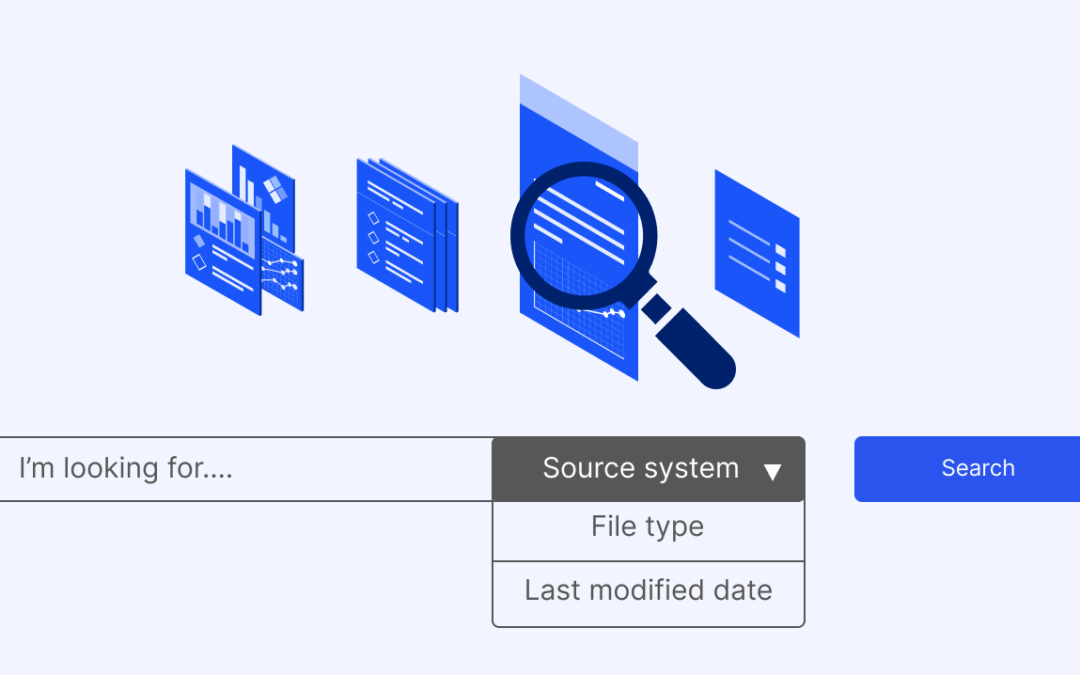
What is an enterprise search engine? A guide to AI-powered information access
An enterprise search engine is a specialized software that enables users to securely search and retrieve information from across an organization’s internal data sources and systems.

A comprehensive guide to AgentOps: Scope, core practices, key challenges, trends, and ZBrain implementation
AgentOps (agent operations) is the emerging discipline that defines how organizations build, observe and manage the lifecycle of autonomous AI agents.
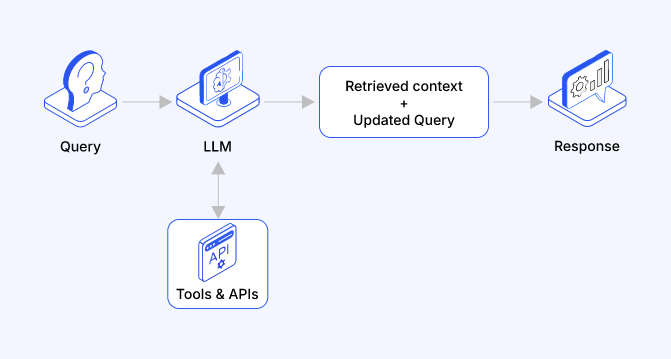
Adaptive RAG in ZBrain: Architecting intelligent, context-aware retrieval for enterprise AI
Adaptive Retrieval-Augmented Generation refers to a class of techniques and systems that dynamically decide whether or not to retrieve external information for a given query.
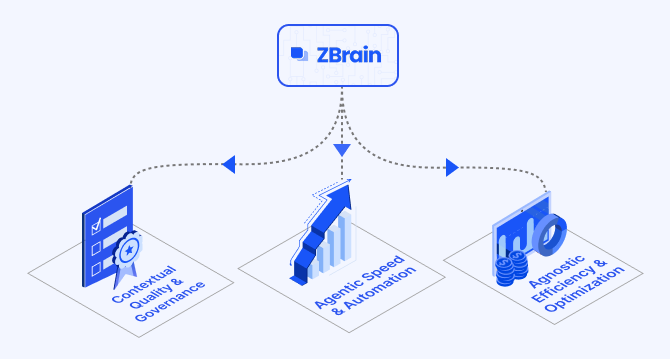
How ZBrain breaks the trade-offs in the AI iron triangle
ZBrain’s architecture directly challenges the conventional AI trade-off model—the notion that enhancing one aspect inevitably compromises another.
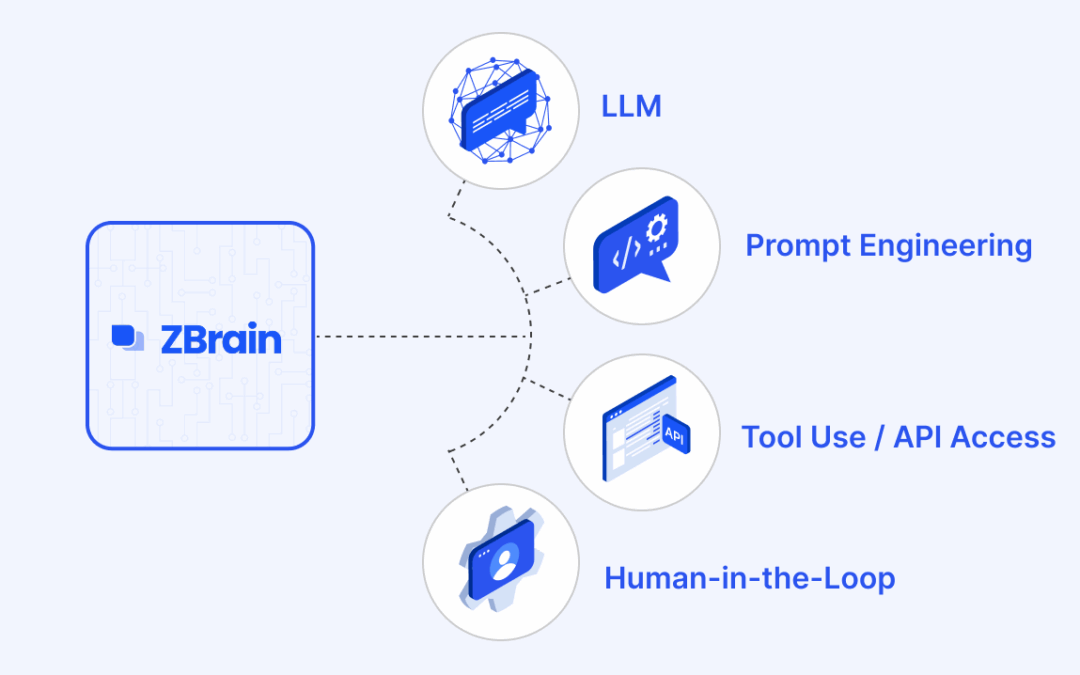
ZBrain Builder’s AI adaptive stack: Built to evolve intelligent systems with accuracy and scale
ZBrain Builder’s AI adaptive stack provides the foundation for a modular, intelligent infrastructure that empowers enterprises to evolve, integrate, and scale AI with confidence.
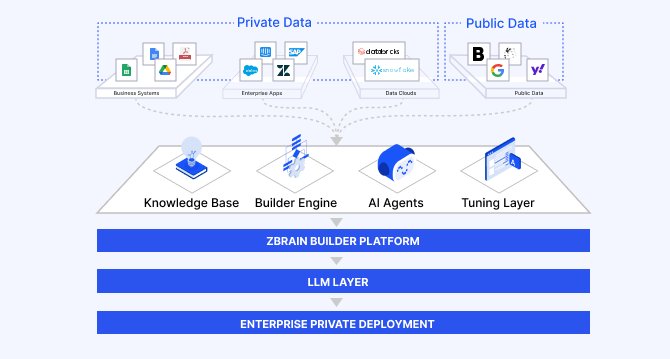
Automated AI workflows with ZBrain: Flows, LLM agents and orchestration patterns
ZBrain enables enterprises to design workflows that are intuitive for teams, efficient in execution, and adaptable to evolving business needs—transforming automation into a strategic advantage.
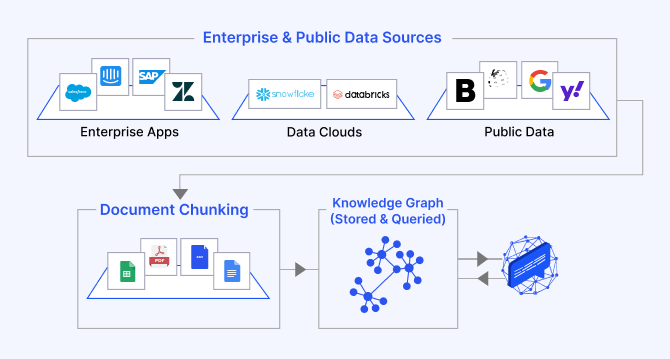
The role of knowledge graphs in building agentic AI systems: Architecture, reasoning, and ZBrain’s implementation
ZBrain Builder leverages knowledge graphs to improve contextual precision and enable reliable multi-hop reasoning in its agent responses.

ZBrain Builder: The agnostic agentic AI platform redefining enterprise AI orchestration
ZBrain Builder simplifies many aspects of AI development through its low-code interface and agnostic integration capabilities, maximizing its value depends on thoughtful planning across deployment, configuration, governance, and integration.
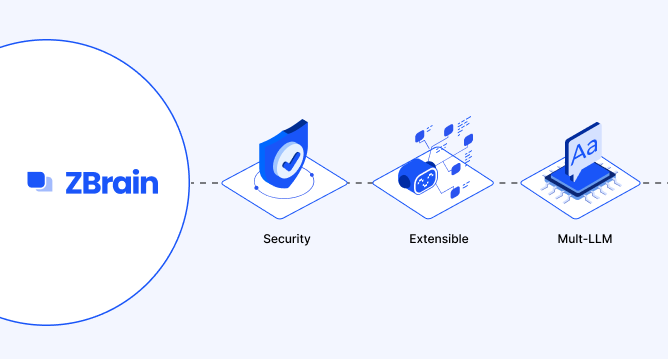
How ZBrain Builder accelerates enterprise delivery with low-code development
Low-code development and generative AI are two transformative forces that converge in ZBrain Builder to create a potent platform for enterprise innovation.











